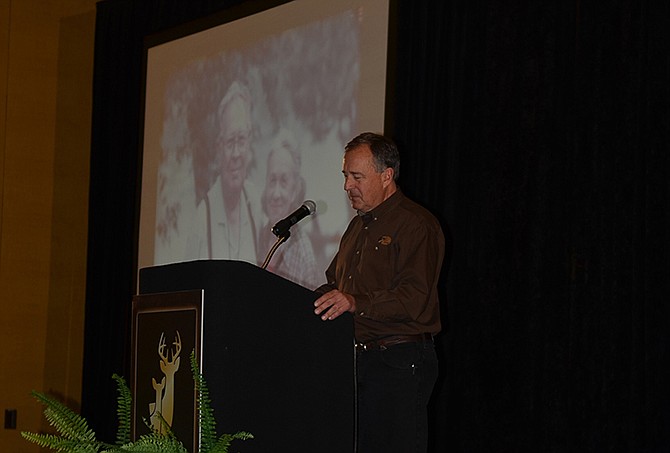The North American Whitetail Summit was the brainchild of the Quality Deer Management Association (QDMA).
It took place March 3-6 in Branson, and I attended the entire summit. Organized to bring together leaders of the whitetail world, the summit was host to conservation organization leadership, biologists from federal and state agencies (including Missouri), hunting industry manufacturers, outdoor media, land managers, concerned hunters and more.
"We are here to identify top priorities of key whitetail stakeholder groups. We are looking for similarities, but also differences. We need to voice concerns, and come together to address them," said Brian Murphy, CEO of the Quality Deer Management Association.
Understanding there are significant differences in whitetail deer management desires was key to the success of this summit. Trophy hunters and deer biologists don't often see eye-to-eye. Land managers and public land hunters have different takes on many topics. But what everyone there really cares about is the white-tailed deer. Working together to shape the future of the North America's most pursued game animal is both a challenge and privilege.
"We are at a crossroads of whitetail deer management and face more challenges today than in years past. Whitetail deer populations are lower today in many states than they have been in many decades, and hunters are concerned," Murphy said.
The restoration period of the whitetail plan is all but complete. Deer numbers escalated in many states beyond original expectations set decades ago. Now we must learn to maintain and balance the right number of deer per landscape.
"In many states populations are down 10, 20, 30 percent or more off their peaks. Its how we address these issues that dictates what whitetail deer hunting will look like in years and decades to come," Murphy said.
There are nearly four times as many deer hunters as there are hunters chasing the next closest species in the U.S. Turkey hunters come in a distant second. This means deer hunters dominate the hunting culture.
Nearly 6 million whitetails were killed in 2012. Those deer resulted in 1.2 billion healthy meals for hunters, their family and friends, and needy Americans around the country. These hunters also inject billions of dollars into the U.S. economy. Deer hunters are contributing the most funds to the wildlife conservation coffer.
In many ways, deer hunting trends are changing. One of those trends we are seeing alarming a lot of hunters right now is a reduction in deer killed in many states. Especially in the prime Midwestern deer hunting states.
Iowa's deer harvest has declined for eight straight years. In 2013, Indiana's deer harvest was down more than 10,000 from 2012. Missouri was down more than 50,000. So what's going on? Are there fewer deer?
"In some areas, for sure," QDMA director of education Kip Adams said. "But the sky isn't falling. There are a number of issues going on."
Disease, fewer hunters, lack of access and an overall declining interest in hunting by U.S. youth are all well-known factors playing to the decline of deer killed. Also, many states have been actively trying to reduce deer numbers. The number of deer hunters want and what the landscape can support aren't often the same. Many state management plans are working, and hunters are now noticing it.
A collective attitude change amongst hunters also contributes. In 2012, 37 percent of bucks harvest were 1½-year-olds. This was the lowest percentage of 1½-year-olds killed ever. In 1989, 62 percent of bucks killed were 1½. Harvest trends are changing as more and more hunters are letting immature bucks walk, thus not filling their tag.
More than 32 percent of harvested bucks were at least 3½ years old. More hunters are holding out for trophy bucks, and filling their freezers with does. Three regions of the country killed more than 3.1 million does in 2012. The question then becomes, are we killing too many does?
Balancing hunter satisfaction and landscape conservation is tough. If you're noticing a significant reduction in whitetail numbers in your area, then there are likely a number of factors at work. It's going to take a mix of agency regulation and citizen regulation to stabilize and maintain herds around the country.
See you down the trail ...
III
Brandon Butler is an outdoors columnist for the News Tribune. Contact him at [email protected].

